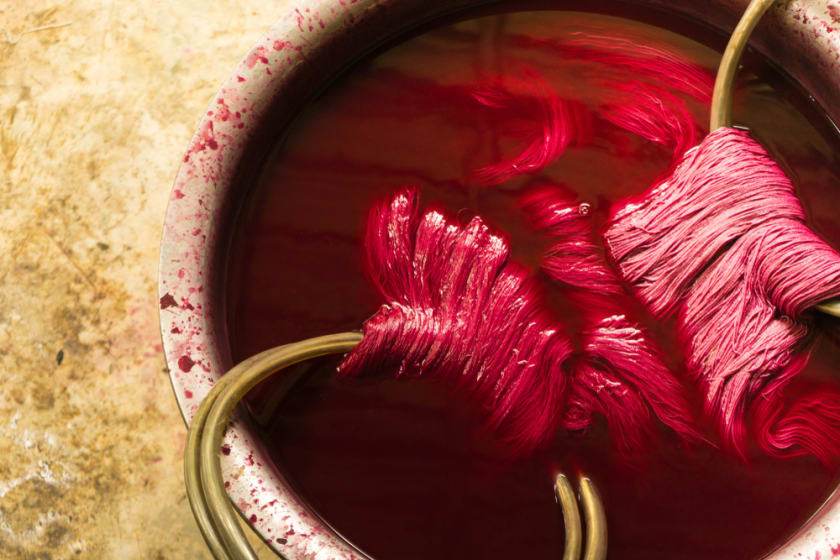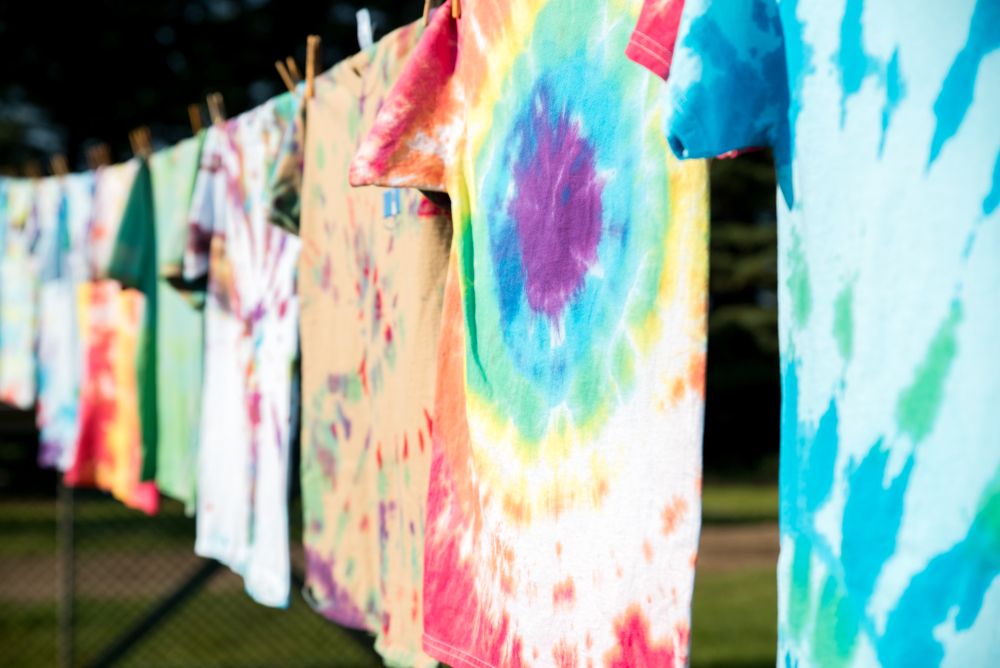Master Tips On Professional Garment Dyeing



Why limit yourself to the pre-made garment dyeing colours when you can start experimenting with funkier options and create something of your own? The world of garment production has undergone several changes over the last few decades, with softer and more generous cuts becoming extremely popular. While the trend has opened up a world of varied possibilities, the utility of a gentle, worn-out fabric is often overlooked. This is where garment dyeing comes in.
Defined as the process of colouring clothes after cutting and sewing them together, garment dyeing is known for softer material and a vast depth in colour. In this article, we shall be sharing some tips for a better, more professional garment dyeing process.
What is garment dyeing? How has the process evolved?
Garment dyeing is defined as the process of changing the colour of a textile/garment by soaking it in dye baths. These dye baths are usually made using specific dyes and chemicals that colour the fabric and yarn via absorption. The efficacy of the garment dyeing process depends on various factors.
Some of them include:
1. Composition of the solution
2. Amount of time the fabric is dipped in the solution
3. Temperature at which the process happens
Compared to chemical dyes, natural dyes are sourced from plants and animals.
While it is a great option for small-scale garment manufacturing, commercial garment dyeing uses chemical dyes extensively. Basic dyes are used on acrylic fibres, while acid dyes are used on nylon and protein fibres like wool and silk, and disperse dyes are used on polyester yarn. Cotton can be dyed with a variety of dyes, including traditional vat dyes as well as modern synthetic reactive and direct dyes.
Garment dyeing is an innovative method used for improving the style and finish of a garment. Garment dyeing first came into prominence during the early 1980s. It was an instant hit, being improved by Italian designer Massimo Osti. He encouraged the process of garment shrinking, dyeing it at 90°C temperature.
Apart from the industrial benefits of garment dyeing, the creative advantage was immense. It allowed designers to unleash their creativity, with cotton becoming the primary fabric.
Cotton not only ages well but also acquires fades and patina owing to sunlight.
Types of Garment Dyeing Techniques

The process of garment dyeing differs from each other, based on the dye and technique being used. Some of the common garment dyeing techniques are as follows:
- Reactive Dyeing
As part of this technique, reactive dyes are chemically mixed with the fabric, thereby creating a strong bond between the two. This often leads to deep, outstanding colour that stays on even after washing the garment multiple times or when exposed to sunlight.
Such dyes are available in various colours in the market, being used to dye linen and cotton clothes.
- Direct dyeing
As is evident, this technique involves dyes being applied directly to the fabric. It's unique in the sense that the process doesn’t use an affixing agent and is used in fabrics made out of cotton, silk, wool and nylon.
It is, however, not as effective as reactive dyeing since it requires some further treatment for deeper colour.
- Sulphur Dyeing
This technique uses sulphur dyes for colouring the garments. It is also used for dyeing blended fabrics such as acrylic fibres, polyester and nylon among others.
Sulphur-based dyes are quite common and are used in colouring garments in bulk quantities, are easy to apply and also don't cost a lot.
- Pigment Dyeing
Similar to printing ink, pigment dyes react to the kind of textiles they’re applied to. The pigment ink usually sits atop the fabric, being glued to it via chemical resin and binders.
Applicable to a variety of fabrics, pigment dyes are often used to give your clothes a slight fade.
Benefits of Garment Dyeing
Garment Dyeing offers multiple benefits during the textile manufacturing process. The process is comparatively easier than fabric dyeing, and thus, it is a preferred option for garment production and exports.
Some important benefits of garment dyeing are as follows:
1. Lower cost of production, making it suitable for any colour or shade.
2. Takes less time to produce and supply.
3. Prevents shade variation in garments.
4. Garment dyeing is ideal for producing smaller garment units at exponentially lower costs.
5. Allows you to re-dye garments, making them seem surprisingly new.
6. Allows you to scour, bleach or de-size the garment easily.
7. Requires less capital investment, with exponentially high quality garments.
8. Low liquor ratio
Effective Tips for Professional Garment Dyeing

After you've prepared the garment, you can start dyeing it. It's not necessary to start from scratch, and you can use garments of any colour. Once done, use a colour removing agent to get rid of the colour.
Given below, is a series of tips to ensure effective garment dyeing:
- Personalize the colours:
Pour hot water into a glass, before adding a small amount of dye to test the colours. Now, stir the mixture slowly before dipping a napkin or T-shirt into the glass container for a few seconds. Observe the shade of colour and how it appears. Understand your proportions and then apply those to your dye bath. If the fabric item is new, then wash it properly. Using a drop cloth, cover the work surface. Fill a bucket, bin, or stainless steel sink halfway with very hot tap water or boiling water (big enough to hold the fabric loosely)
- Use a bathtub for larger fabrics:
When dyeing large blankets, clothes or bedsheets, put them into a large tub filled with dye and other ingredients. You can even use a portable basin, placing it in the tub, before transferring pots of boiled or warm water. Add the cloth to the dye mixture and wet it thoroughly, stirring the water with a suitable tool. Keep your garment dipped in the dye for 10–15 minutes, or until it is slightly darker than the desired colour. Once you’ve achieved your desired colour, remove the cloth and rinse it under running water. You must first dip it in warm water, working your way down until the fabric is clear.
- Use detergents and wash properly
Another great tip for professional-quality garment dyeing is to wash the garment with a mild detergent on the cold cycle to seal the dye and retain its colour. Leave it to dry afterwards.
- Avoid bleeding colours while washing
Dyed fabrics can sometimes bleed onto other fabrics, especially during the first few washes. In order to avoid this problem, try washing the fabric by itself for a while or use an old, white towel to see if the garment is still bleeding colours.
- Custom colour
Another really important garment dyeing tip is to make a little dye bath initially that acquires the desired look without wasting the material. Take a big, glass measuring cup and add dyes along with boiling water. Remember to keep track of the colours you’re applying. Using a paper towel, test the colour a little before using a bigger bath for dyeing.
- Use natural fabrics
It's a better idea to use natural fabrics, especially if you’re just starting out with professional-grade garment dyeing. These fabrics are comparatively easier to dye, and also mix up quite effortlessly with the colour. For your first project, it's always good to stick with the proven options.
- Large items
Use a huge plastic container positioned in a bathtub (to catch any drops) and pots of water boiled on the stove to colour bedding and tablecloths. It's important to keep the fabric moving while it's in the dye bath; mix, lift, and redistribute it with a long spoon. Remove it and place it in another empty bin to transfer it to the washing machine for rinse.
Final Thoughts
Since its humble beginnings as a solution for dry-cleaners to mask the hue variations in clothes, garment dyeing has come a long way. The combination of new technology and classic dyeing procedures has found several takers. This technique has also found extensive usage in the field of commercial manufacturing. Being an inherently low-investment technology, garment dyeing has now become mainstream. We hope that these tips will help you understand professional garment dyeing better.
If you’re looking for professional garment dyers for your clothing range, reach out to us at Fashinza. We bridge the gap between manufacturers and suppliers, helping manage the apparel production process from start to end through our new-age product development and supply chain management platform.
Based on your specifications, Fashinza sets you up with manufacturers that fit the bill. Just select your desired supplier, choose the fabric and place your order. You can even communicate, track orders and make payments simultaneously.



















